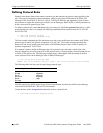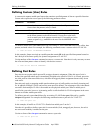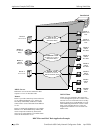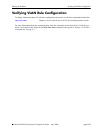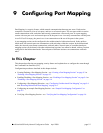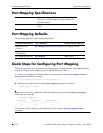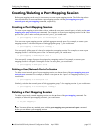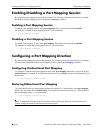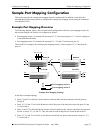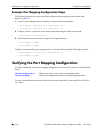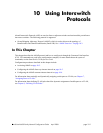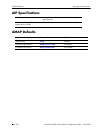
OmniSwitch 6600 Family Network Configuration Guide April 2006 page 9-1
9 Configuring Port Mapping
Port Mapping is a security feature, which controls communication between peer users. Each session
comprises a session ID, a set of user ports, and/or a set of network ports. The user ports within a session
cannot communicate with each other and can only communicate via network ports. In a port mapping
session with user port set A and network port set B, the ports in set A can only communicate with the ports
in set B. If set B is empty, the ports in set A can communicate with rest of the ports in the system.
A port mapping session can be configured in the unidirectional or bidirectional mode. In the unidirec-
tional mode, the network ports can communicate with each other within the session. In the bidirectional
mode, the network ports cannot communicate with each other. Network ports of a unidirectional port
mapping session can be shared with other unidirectional sessions, but cannot be shared with any sessions
configured in the bidirectional mode. Network ports of different sessions can communicate with each
other.
In This Chapter
This chapter describes the port mapping security feature and explains how to configure the same through
the Command Line Interface (CLI).
Configuration procedures described in this chapter include:
• Creating/Deleting a Port Mapping Session—see “Creating a Port Mapping Session” on page 9-3 or
“Deleting a Port Mapping Session” on page 9-3.
• Enabling/Disabling a Port Mapping Session—see “Enabling a Port Mapping Session” on page 9-4 or
“Disabling a Port Mapping Session” on page 9-4.
• Configuring a Port Mapping Direction—see “Configuring Unidirectional Port Mapping” on page 9-4
and “Restoring Bidirectional Port Mapping” on page 9-4.
• Configuring an example Port Mapping Session—see “Sample Port Mapping Configuration” on
page 9-5.
• Verifying a Port Mapping Session—see “Verifying the Port Mapping Configuration” on page 9-6.




